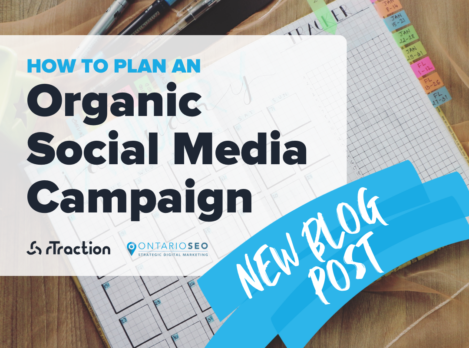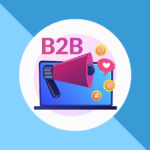This blog is written in collaboration with Manuela Zuleta Jiménez, Marketing Expert at rTraction. rTraction helps non-profits and charities achieve their missions. To connect with rTraction or learn more about what they do, start by booking a call today https://www.rtraction.com/book-a-call
Social media campaigns can be a great way to promote an event, product, or service to your existing audience, and bring in potential new followers. A well-executed campaign can significantly boost brand visibility, engage your target audience, and drive conversions. While paid advertising can certainly help, many successful campaigns are built on the foundation of organic growth, especially for organizations in the non-profit sector. In this blog, we’ll explore a variety of tactics and best-practices to make your next campaign as successful as possible.
Define Clear Objectives
In order to know where you’re headed, you have to know where you’re starting. Before diving into any creative work, it’s important to define clear objectives, and the best way to do this is by reviewing your analytics. From there, you can decide what you are trying to achieve, and create reasonable targets. Whether it’s increasing brand awareness, driving website traffic, or generating leads, having specific and measurable goals will guide your campaign’s direction (for example, increase following by 15%, increase engagement by 5%, and so on.)
Know Your Audience
Put yourself in your customers’ shoes, and ask yourself how you can best structure your content to resonate with their interests, questions, and pain points. Once you’ve identified the target audience of your campaign, it’s time to decide what channels you’ll be posting your content to. Different platforms cater to different audiences and content types, so make sure to research and select the platforms that align with your target audience and campaign objectives, focusing your efforts on a few key platforms rather than spreading yourself too thin. Here are some tips for adjusting your messaging style to fit each platform:
- As a business to business platform, it’s best to maintain a professional and informative tone in your posts.
- Great for long-form content such as detailed articles or posts that provide in-depth information (you can also include visuals like infographics for better engagement).
- Highlight case studies and success stories related to your business or industry. This demonstrates the real-world impact of your products or services.
- Similar to Twitter, using relevant hashtags can help your content reach a wider audience (stick to around 3-5 per post!)
- High-quality images and eye-catching visuals are a must. Try to stay away from graphics with a lot of text, and instead, save the majority of your copy for a well-written caption.
- Compelling captions including storytelling, humor, and personal anecdotes can help create a stronger connection with your audience, just make sure to include keywords.
- Use features like polls, questions, and quizzes in your Stories to encourage audience participation.
- You can include as many as 30 hashtags for an Instagram post, however we recommend sticking to between 5-10, and adding them to your comment section instead of your caption. Try to stay away from hashtags that are too popular, and instead look for niche ones specific to your industry.
- Collaborative posts with other organizations can be a great way of extending your reach to audiences who may otherwise not see your content.
- Facebook allows for longer posts, so it is recommended to share a mix of text, images, videos, and links.
- Hashtags are not as prioritized for Facebook posts, however creating a recognizable hashtag for your campaign can be beneficial.
- Facebook’s key feature is event promotion: if this is a focus for your campaign, Facebook is a great platform to take advantage of.
X (formerly known as Twitter)
- Keep posts concise and to the point. Aim for brevity, only including adjectives that will make your post impactful, and don’t forget to add relevant visuals or GIFs.
- Research trending and relevant hashtags in your industry and incorporate them into your posts (maximum 2 per post).
- Prompt conversation starters in your posts, and create threads to boost visibility.
Extend Your Reach
With organic social media, getting your posts to as many eyes as possible can be a challenge, so the best way to ensure the highest possible reach is through consistent posting. Use a content calendar for scheduling your posts, and incorporate tactics that will keep your content circulating, such as: sharing stories and reels, responding to comments and inquiries, and liking and commenting on other organizations’ content. While it’s important to stay true to your brand and campaign, finding creative ways to incorporate relevant trends can help your content reach a wider audience. An easy way to do this is by using pre-made templates from Instagram, and trending audio.
Creating a successful social media campaign using only organic means requires careful planning, consistent effort, and a deep understanding of your audience. By defining clear objectives, delivering valuable content, engaging with your audience, and staying adaptable, your organic growth can lead to meaningful results that benefit your brand over the long term. Great storytelling and captivating visuals can have a greater impact on the success of your campaign than implementing tactics that may not fit your brand or objectives. Be authentic to your organization’s brand, and ask yourself “Is this valuable to my audience?”. Remember, success in organic social media marketing is built on patience, authenticity, and a genuine connection with your audience.







